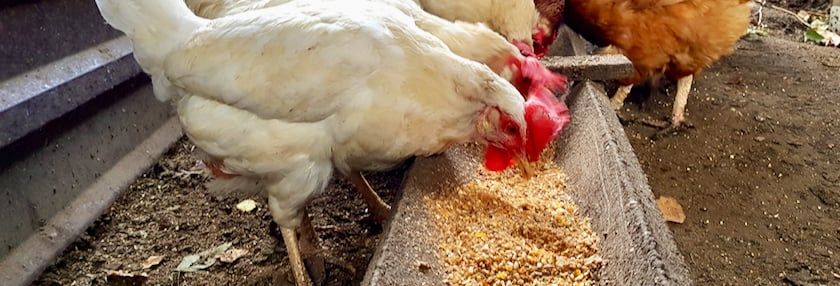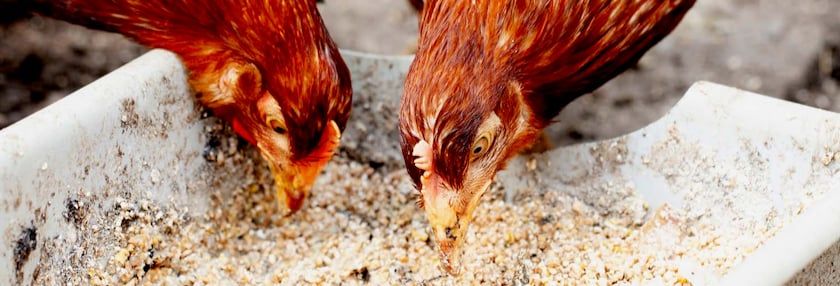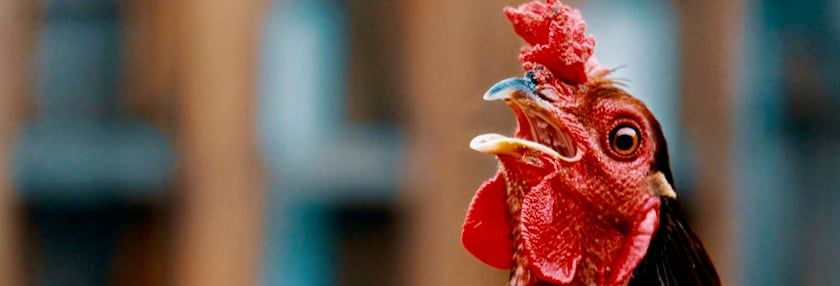Feeding For Meat, Eggs, Or Both?


Why one-size-fits-all…really doesn’t
Much confusion exists regarding the terminology surrounding backyard poultry feeds and the difference between those designed for layers and those designed for broilers or “meat birds.”
To fully understand the differences, we need to look at different types of birds and how their nutrient requirements differ from each other.
Know the types, know their needs
In back yard flocks we see birds that were bred strictly for egg production, such as ISA Browns or white Leghorns; birds that were bred strictly for meat production, like Ross 308s, Jumbo Cornish Crosses, or Freedom Rangers; and birds that are dual-purpose such as Rhode Island Reds, Black Australorps, Wyandottes, and more.
These different classes of birds have visibly different body conformation, and unique nutrient requirements.
The most precision-formulated diets for these birds would vary widely in amino acid density, even in the starter phase. For egg-laying birds such as ISA Browns, starter diet digestible lysine is recommended at 1% for commercial production. In contrast, for Ross 308s or other meat birds the recommendation is around 1.28%.
The majority of backyard birds are likely to be dual-purpose or not specifically bred for either egg or meat production. In this case, an intermediate level is probably best.
Start with the label
As a label reader, one of the first things you look at is crude protein. If the diet is formulated using ideal amino acid ratios, then a high quality 18% crude protein chick starter probably has around 0.95% digestible lysine—a cheap, economy 18% feed will have even less.
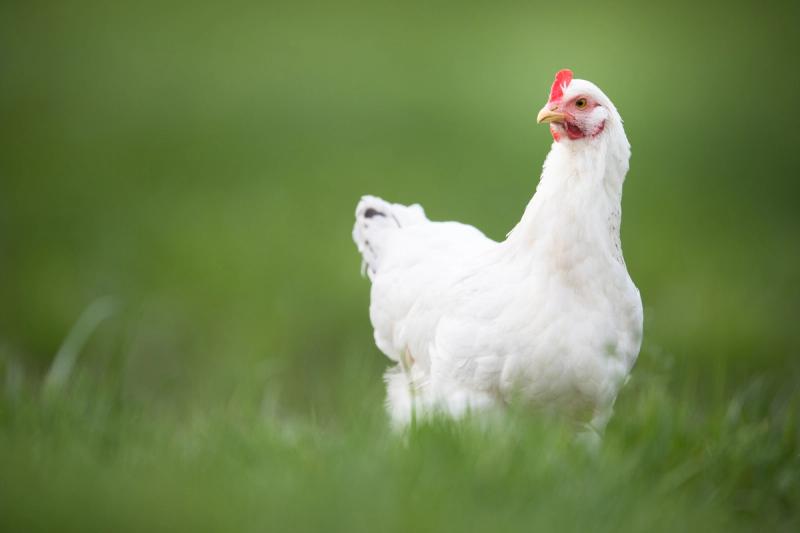
In contrast, the same formula with the minimum digestible lysine level increased to 1.28% will have a crude protein level of over 23%. In other words, an 18% chick starter is fine for egg-laying specific breeds, but dual-purpose and meat-bird breeds should probably be fed a starter with more than 20% crude protein.
Chickens have an incredible ability to adjust their feed intake to their amino acid and caloric needs.
So if a feed is marginally deficient in methionine, lysine, threonine, or calories, they will increase their feed intake to try to meet their needs. However, they can only do so much and at some point they will not be able to compensate.
On the other hand, parameters such as growth or egg production typically increase until the need for a limiting nutrient is met and then reach a plateau. In other words, overfeeding a nutrient(s), while wasteful, will still provide maximum production—underfeeding will never result in a bird reaching its potential.
Different, changing calorie needs
As we look for other differences between layer and broiler feeds, we need to look at energy requirements as they get older. Starting energy requirements are fairly similar, however, they very quickly go in opposite directions.
Meat birds have increasing energy needs from hatch through market weight. This typically means going from around 1,360 to over 1,450 calories per pound. In contrast, layers have decreasing energy needs during the rearing period. This is typically a reduction from around 1,340 to 1,250 calories per pound.
So an ideal calorie level for a soon-to-be-laying hen would severely limit growth of a broiler.
Again for the majority of birds, an ideal non-layer bagged feed that isn’t specifically labeled for meat production is probably going to be somewhere in the middle.
Eggs versus meat
Finally, we can discuss the difference between a layer feed and a non-layer feed.
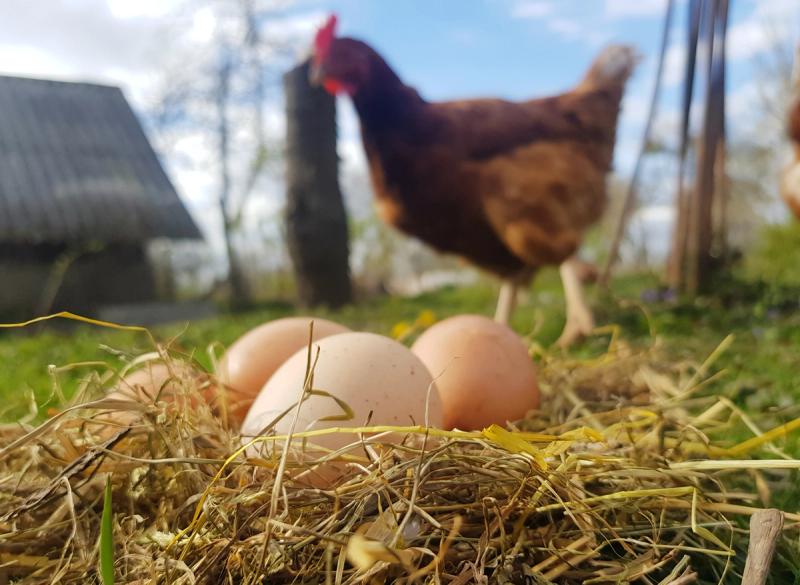
In addition to lower protein and energy needs, a laying hen needs much more calcium than a meat bird to produce egg shells. While a non-layer feed will typically have a calcium level between 0.7 and 1 and a calcium to phosphorus ratio around 2:1 (the ratio of calcium to phosphorus in bones), a layer feed will often have a calcium level between 3.8 and 4.5 and a calcium to phosphorus ratio of 9 or 10:1.
This is because the egg shell is composed of calcium carbonate and excess calcium is required from the diet to sustain egg production.
Feeding non-laying birds a layer feed can potentially be very dangerous.
Poultry scientists O. Smith and E. Kabaija investigated the effects of wide calcium-phosphorus ratios in broiler diets. Calcium to phosphorus ratios of 5:1 disrupted manganese metabolism, causing a high incidence and severity of leg problems. Remember in a layer diet the ratio is closer to 10:1!
Keeping eyes on the flock
One thing that I have noticed (this is not based on research, but only anecdotal) is that roosters seem to be remarkably resilient to nutritional imbalances when given free access to the outdoors.
I’ve heard many times from flock owners that they provide layer feed and their roosters eat it too and everybody seems happy and healthy.
I have to assume that they are able to somehow adjust their nutrient intake accordingly with insects, plant material, or other food items that they can scavenge. Despite the fact that feeding layer feed to non-laying birds has worked for many people, I can not recommend it.
Regarding terminology, it’s more important to look at the lysine, crude protein, calcium, and phosphorus levels of a feed than at whether it’s called layer or meat bird or broiler feed.
Knowing how the nutrient needs differ for different life stages and types of birds and the level of production you expect will help you choose the best feed for your birds.
Tags:Feed 4 Thought

Chicken Whisperer is part of the Catalyst Communications Network publication family.









